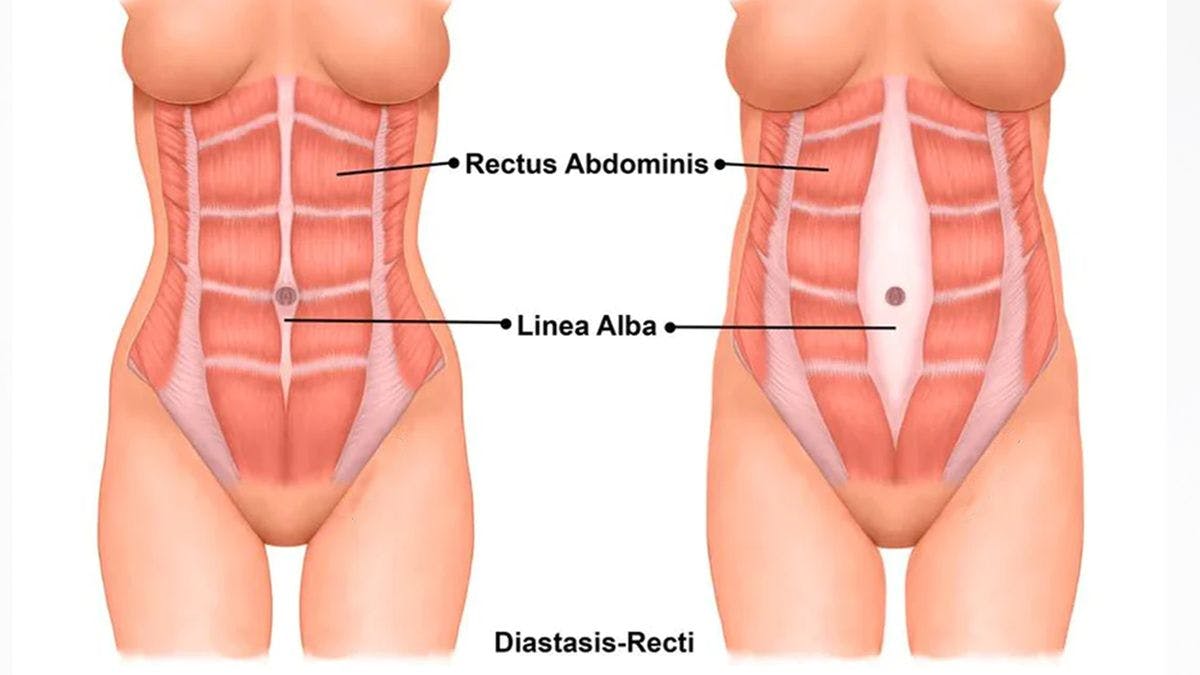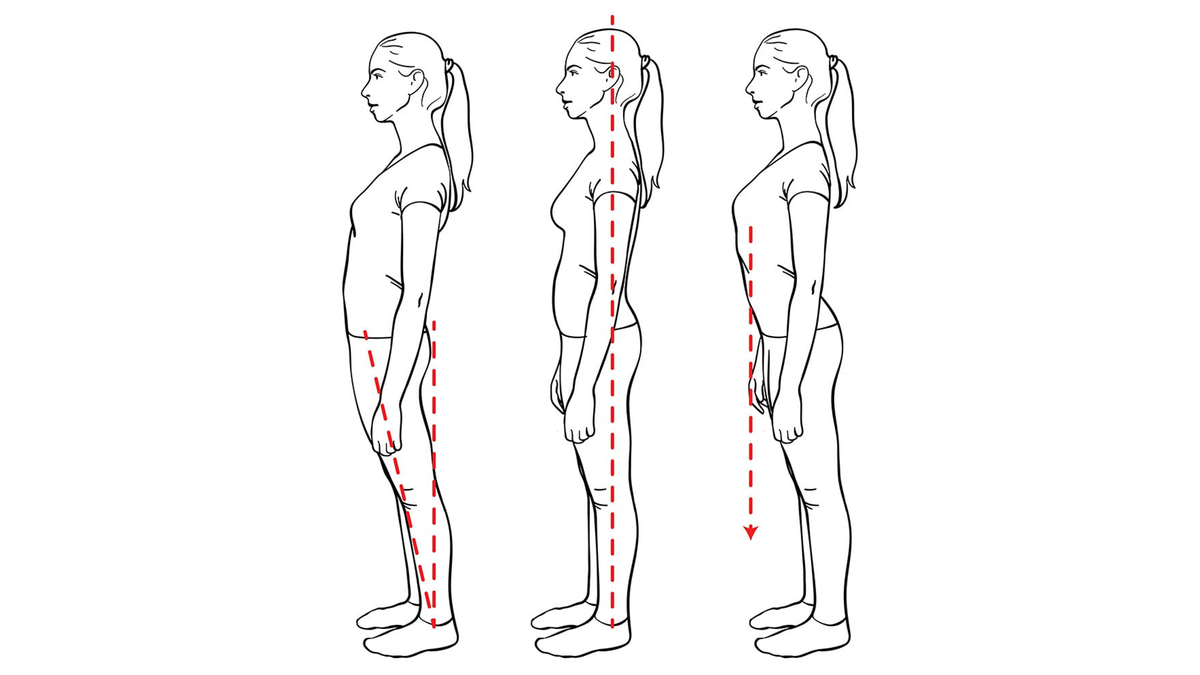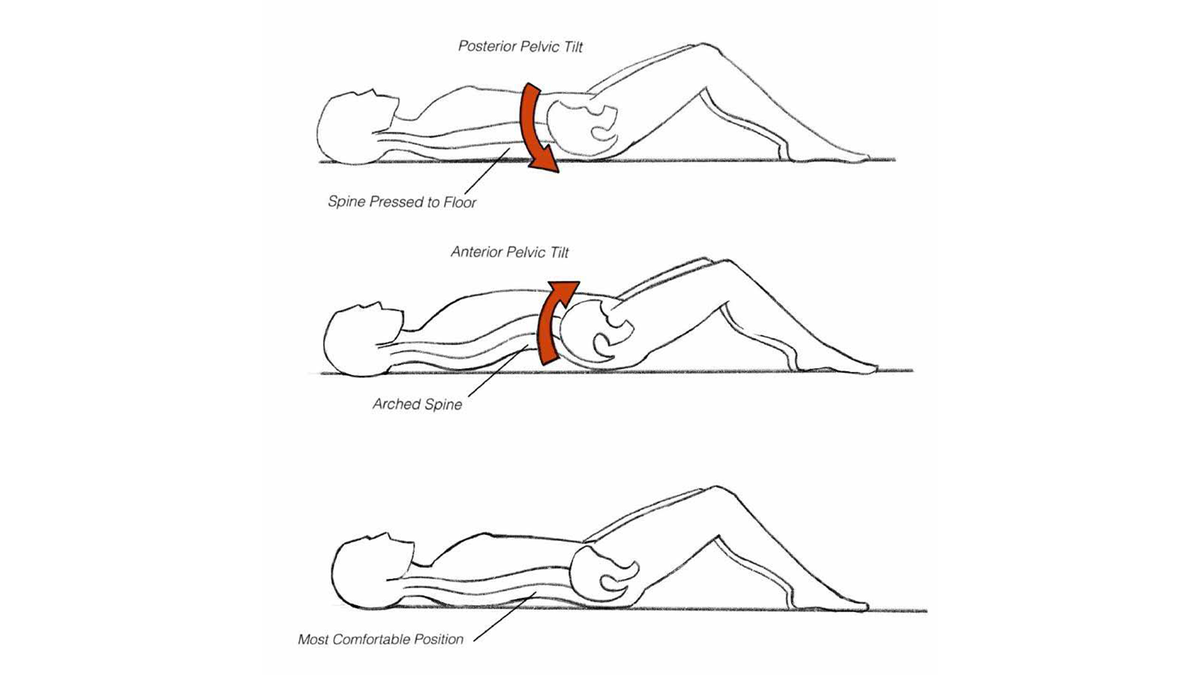27/08/2023
Exercises for Diastasis Recti Recovery: A Guide for New Mothers

This article will discuss navigating diastasis recti (abdominal separation) recovery and look at ways to safely improve abdominal wall function and strength.
If you're a new mother, you've likely noticed changes in your body following pregnancy. This is normal, expected and straight-up beautiful. You might observe new stretch marks, changes in skin elasticity, and of course, your body may simply feel different.
Some women might also sense a degree of abdominal weakness or experience ‘bulging’ along their midline when engaging in certain movements, such as getting out of bed. While this sensation isn't usually painful, it can be concerning. It's important to know that these experiences are quite common and are linked to the remarkable process of pregnancy and childbirth.
This article will delve into the topic of diastasis recti, focusing on postpartum recovery and exercises to aid in this process.
You'll gain insights into:
- Understanding diastasis recti.
- The concept of healing diastasis recti.
- Guidelines for safe and effective exercise with diastasis recti.
For those with significant diastasis or other concerns, it's advised to consult a pelvic health physio or healthcare professional for personalised assessment and tailored physical therapy guidance.
Understanding Diastasis Recti
Diastasis recti refers to the natural separation of abdominal muscles during pregnancy. This separation isn't a tear, hole, hernia, or inflammation. Instead, it involves the stretching and thinning of the linea alba, the connective tissue that joins the rectus abdominis muscles on either side.
Diastasis recti is commonly identified by the width of the gap between these muscles (a width of two fingerbreadths or more during a sit-up exercise is typically considered a diastasis).
It's important to note that prenatal diastasis recti is inevitable due to the stretching required to accommodate a baby’s growth. In essence, it's a natural response to carrying a baby. Research indicates that up to 100% of pregnant women exhibit diastasis recti exceeding 16 millimetres in their final trimester.
What happens after childbirth varies greatly among women. A study from 2016 revealed that six weeks postpartum, 60% of women still had a diastasis recti of at least two fingerbreadths. By the one-year mark, this figure dropped to 32.6%. The severity of the postnatal diastases ranged from mild (two fingerbreadths wide) to severe (over four fingerbreadths wide).

In essence, for many women, these changes tend to resolve over time. However, some might experience longer-lasting effects.
Although a certain degree of abdominal separation is normal postpartum, it can pose challenges for those with a wider or deeper diastasis. Such individuals might be concerned about appearance, or they might find higher-level strength activities more difficult. In severe cases, the tissue might thin to an extent where it feels like there's inadequate protection for internal organs. If assessing your diastasis reveals a width greater than two fingerbreadths or a noticeable ability to press into the midline of the abdomen with minimal resistance, seeking guidance from a physio is recommended.
Is Healing Diastasis Recti Postpartum Possible?
Postpartum women often inquire whether diastasis recti can be healed. Depending on the individual's perspective, the question may take various forms, such as:
"Can I narrow the gap?"
"Can I restore abdominal wall function?"
"Can I change the appearance of my stomach?"
These questions are entirely valid.
Let's delve into what "healing" diastasis recti means, as it can mean different things for different people.
Defining "Healing" Diastasis Recti
Previously, healing diastasis recti was often linked to closing the gap between the rectus abdominis muscles. However, our understanding of diastasis recti has evolved in recent times.
Presently, the focus is more on the loss of connective tissue density and the capacity to generate tension in the linea alba, which influences abdominal wall function. The emphasis is less on reducing gap width and more on achieving optimal activation of abdominal muscles and restoring overall strength throughout the abdominal region.
Clinically speaking, when we discuss healing diastasis recti, we refer to regaining optimal function of the abdominal wall.
Nevertheless, beyond this clinical definition, healing holds diverse meanings for different individuals. One postpartum woman might perceive "healing diastasis recti" as returning to heavy weightlifting as part of her exercise routine, which necessitates optimal functioning of both sides of her abdominal wall. Another might interpret it as feeling at ease and confident in her appearance postpartum.
Given these considerations, can diastasis recti be effectively addressed postpartum? The duration and nature of diastasis recti rehabilitation hinge on various factors unique to each person, such as genetics, age, pregnancy count, diastasis width and depth, and personal goals.
Encouragingly, exercise has been shown to enhance abdominal wall strength and function, but we want to look at how we're moving and how that can optimise our recovery.
Four Tips for an Effective Diastasis Recti Exercise Plan
Several crucial strategies can enhance your outcomes when engaging in post-pregnancy exercise with diastasis recti.
Tip 1: Prioritize a More Neutral Body Alignment
Your posture and abdominal wall strength are intertwined in multiple ways.
Consider the following examples:
- Many new mothers adopt a relaxed sway posture, causing the pelvis to shift forward and the rib cage to move behind the pelvis. This posture demands minimal muscle engagement and relies on passive structures like joints and ligaments. Abdominal muscles remain relatively inactive and can remain stretched for extended periods throughout the day (left figure in the illustration below).
- To maintain an upright posture, the erector spinae muscles along the spine might work harder to compensate for diastasis and limited abdominal muscle strength.
- Excessive work by spinal extensor muscles to maintain stability can lead to the rib cage tilting upwards and further stretching the abdominal wall (right figure in the illustration below).
While ‘perfect’ posture doesn't exist, and there's no direct link between posture and lower back pain, aiming for a more neutral spine alignment by aligning ribs over the pelvis and diaphragm over the pelvic floor can be beneficial. Keep in mind that there's a range of neutral positions. Experiment to find the alignment that suits you best for various activities, aiming for relaxation and avoiding strain (try the “tuck” “tilt” and “neutral” tests that I often teach in our online core programmes).


Tip 2: Enhance Core and Pelvic Floor Connection
After you've had your baby and your body is no longer carrying the baby's weight and pressure, activating abdominal wall muscles (including deeper ones like the transverse abdominis) can be more challenging. That mind-muscle connection as we knew has shifted. (However, that’s not to say it won’t return, and sometimes stronger than ever before!).
While restoring tension in the linea alba takes time, focusing on coordination between deep abdominal muscles and pelvic floor muscles can enhance body awareness and muscle function.
Tip 3: Gradually Intensify Abdominal Muscle Engagement
Many women with diastasis recti tend to underload their abdominal muscles or engage in activities that are too demanding too soon. Striking a balance is key. In the initial postpartum months, it's advisable to exercise abdominal muscles with caution if the diastasis is significant (physical therapists can provide guidance). As tissue recovery stabilizes, the emphasis should shift towards building strength and function.
Research indicates that women with diastasis recti often exhibit weak abdominal muscles during testing.
As you reintroduce exercise, gradually intensify abdominal muscle engagement by progressively increasing exercise difficulty, intensity, and load over time. Challenge yourself while ensuring the linea alba doesn't bulge (see tip 4).
Tip 4: Cease Exercise if Bulging or Pelvic Floor Symptoms Arise
Unless advised by a physical therapist, refrain from movements that lead to dome-like bulging or sinking along the linea alba, or trigger pelvic floor issues like incontinence or vaginal discomfort. Such symptoms might indicate inefficient management of intra-abdominal pressure and inadequate coordination of the deep muscle system for the task at hand.
While the exact actions that worsen diastasis recti are still uncertain, it's wise to avoid activities that place undue stress or pressure on connective tissue or exacerbate pelvic floor concerns.
In short, it’s HOW you’re moving, not what you’re doing. So move with a teacher who offers solid cues, and asks you to really tune into how your body is moving, and how it feels.
Given the limited body of evidence-based research on what definitively improves or exacerbates diastasis recti, many physical therapists and personal trainers tend to approach programming for women with a notable abdominal separation with an abundance of caution.
While this cautious approach has its merits, it can sometimes result in broad recommendations to avoid specific abdominal exercises altogether (e.g., "Avoid sit-ups entirely!"). Unfortunately, such generalized advice might not always be in the best interest of new mothers.
Instead, a more adaptable strategy involves focusing on regressions and modifications rather than outright avoidance. By maintaining a heightened awareness of your body and heeding its signals, you can typically incorporate a wide array of exercises that contribute to restoring abdominal wall function and potentially enhancing the appearance of diastasis recti.
And always remember, recovery is a gradual process. Your body has undergone a significant and beautiful transformation, necessitating a period of adjustment. Patience with yourself is key — you're incredible!
If you’re a new mum, I would recommend starting online with our Barre Foundation series. We also offer Pelvic Floor education from Pelvic Floor Physiotherapist, Ingrid Vollweiller.
Our online classes range from 15-45 minutes, so the shorter workout options are perfect if you're a tired mumma trying to look after yourself while you care for your new baby. Remember though, it's never too late to start working on your core strength and function. Whether you're 3 months, 3 years or (30 years postpartum), you will benefit from this programme. It's never too late to improve your mind-muscle connection and feel confident in movement.
Barre Base Anywhere is only $30 per month, after a 7-day free trial.
On-demand barre, yoga & mobility classes.
© 2025 Barre Base · Terms · Privacy
Visit Barre Base